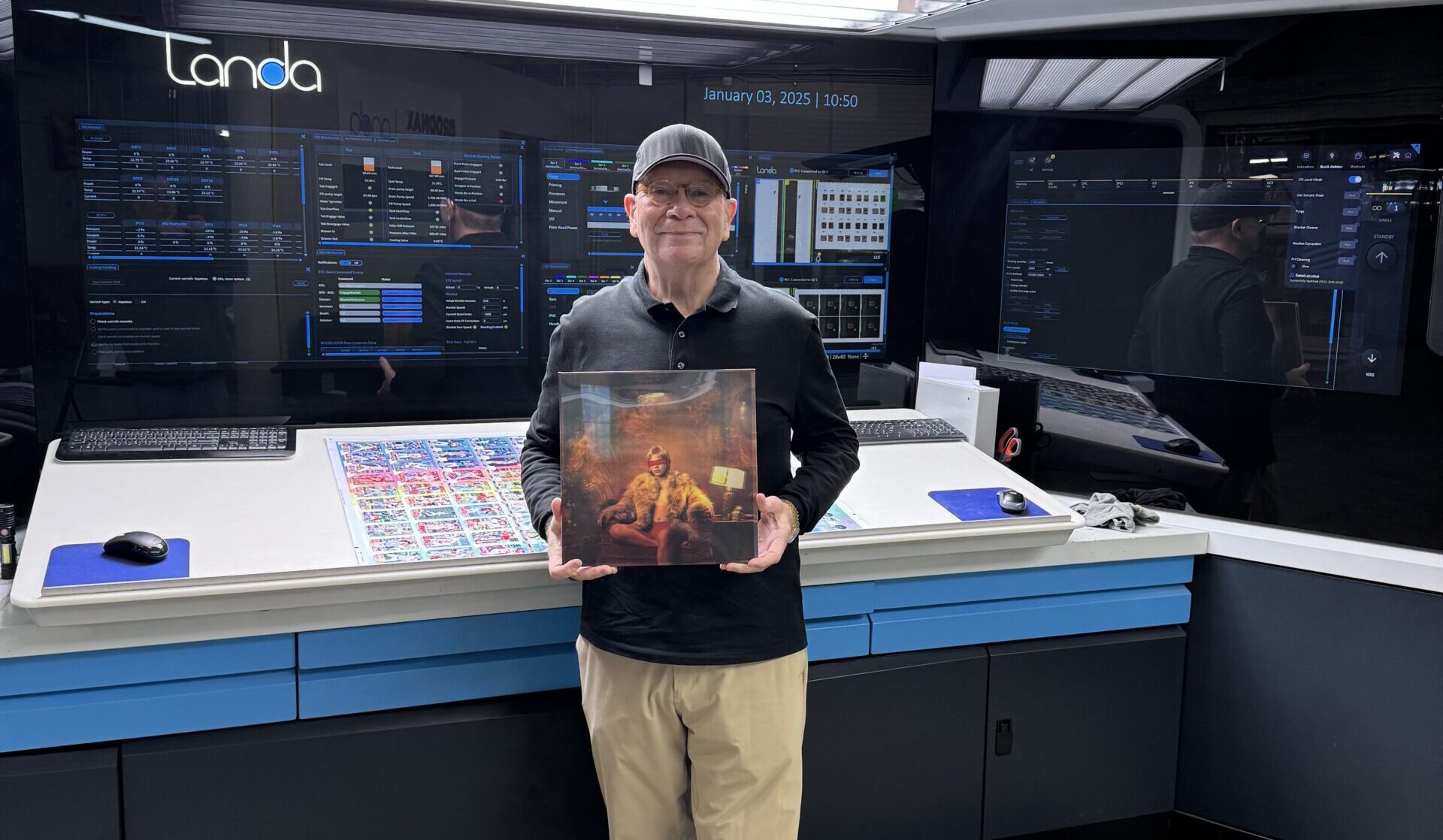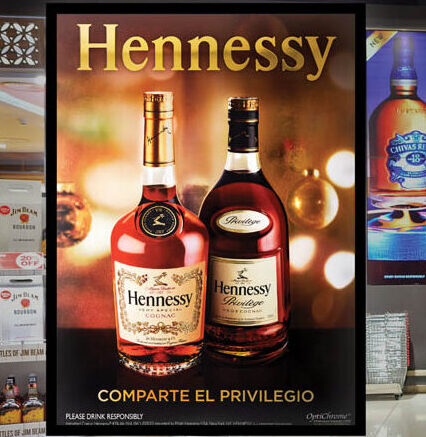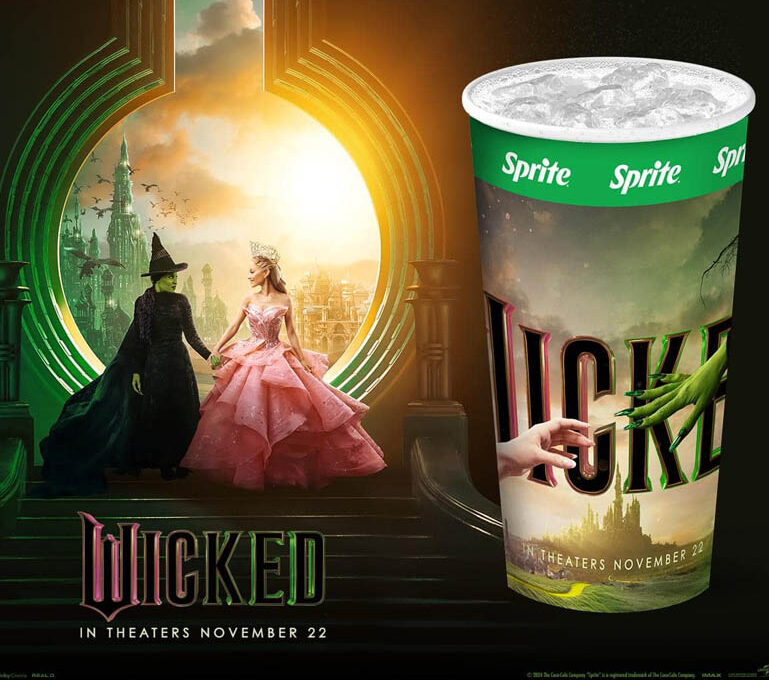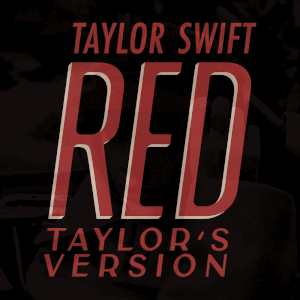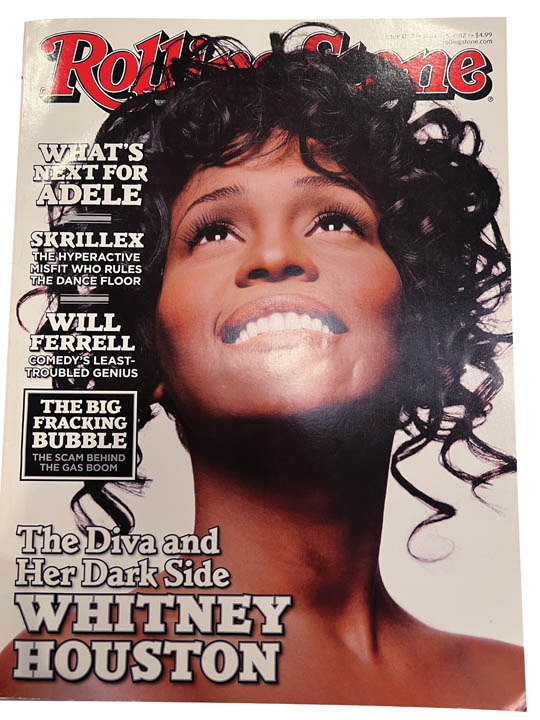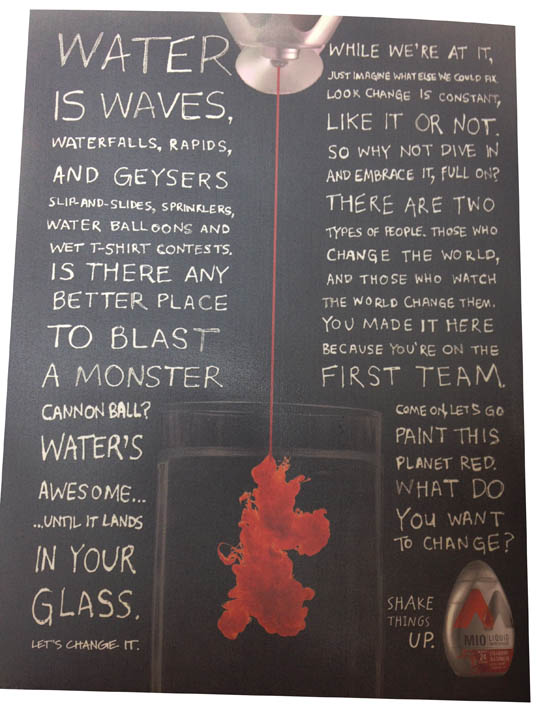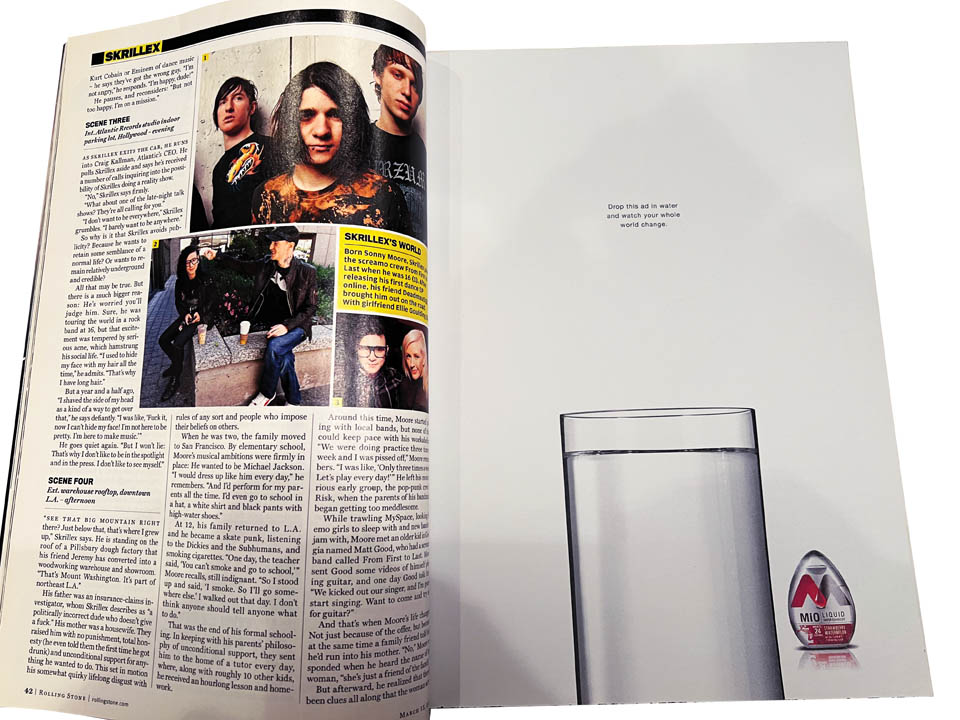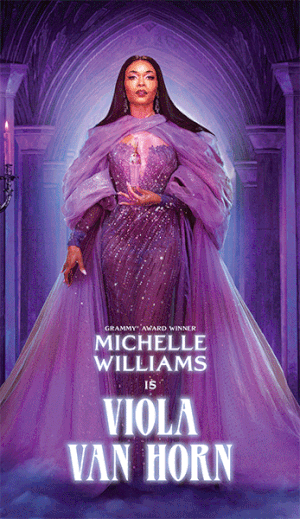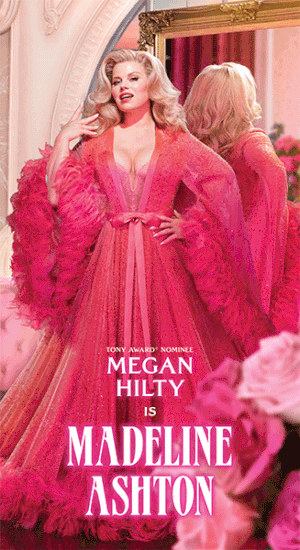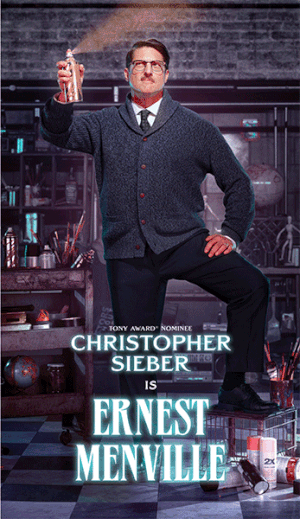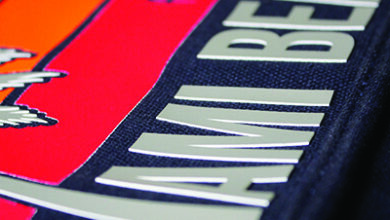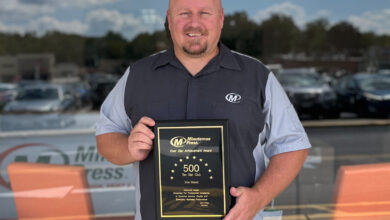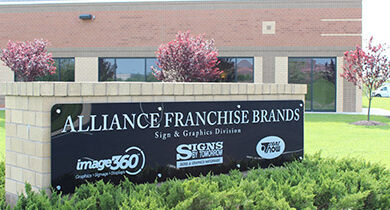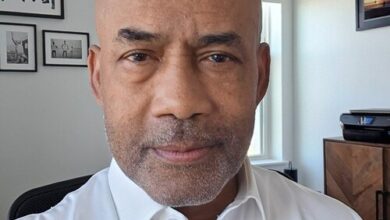The average small- to medium-sized graphics shop typically produces products and services for local businesses, events, educational institutions, sports teams, and, of course, individuals. As a shop gains reputation and credibility, this may extend to higher-paying, higher-caliber clientele such as large corporations, athletic associations, and concert and event venues.
If you’re an extra-ambitious and credible service provider, you may even find yourself contemplating even larger clients — the kind that are generally well-known in popular culture. But venturing into this high-profile territory isn’t for the faint of heart, and it comes with its own set of risks and rewards.
Brad Bartlett, president and owner of OptiGraphics — a full-service print provider specializing in lenticular printing — knows this well. Bartlett is no stranger to the printing world, and his work has been recognized by numerous organizations, earning him awards across the industry.
Here, Bartlett shares his experience, dives into notable projects, and offers advice for working with high-profile clients ranging from Taylor Swift, U2, The Rolling Stones, Broadway, and more.
Printing with the pros
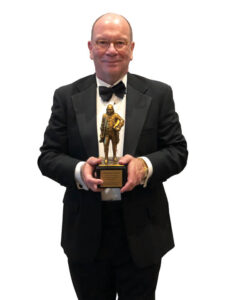 OptiGraphics is a print service provider that has been in business for 55 years, 34 of which Bartlett has been with the company. Based in Dallas, the company offers lenticular, OptiChrome, and RevealSeries printing. These printing methods range in application from small product packaging to large-format signage.
OptiGraphics is a print service provider that has been in business for 55 years, 34 of which Bartlett has been with the company. Based in Dallas, the company offers lenticular, OptiChrome, and RevealSeries printing. These printing methods range in application from small product packaging to large-format signage.
- Lenticular printing: This printing method results in full-motion holographic-type images that mimic movement. When viewing these prints, the human eye perceives a flat, stationary image as a moving one. According to OptiGraphics, this illusion of three dimensions is achieved through a printing process that combines two or more images on a specialized lens material. Lenticular printing is commonly used for wide-format projects, including murals, billboards, city lights, promotional stands, posters, and trade show signs, in addition to smaller formats such as product packaging, drinkware, and point-of-purchase (POP) displays.
- OptiChrome printing: Dubbed by OptiGraphics, this technique enhances an image’s depth and allows metallic highlights to be built into artwork through a metallic background. This printing method is also referred to as 3D chrome printing or metallic printing. OptiChrome printing can be used for trading cards, POP signage, gift cards, and a variety of promotional products.
- RevealSeries printing: A wide variety of printing techniques and special effects are included under the RevealSeries line, such as water reveal, light reveal, red reveal, flash reveal, hot and cold reveal, dark reveal, scent reveal, and scratch reveal. As the name implies, this printing results in a product in which an image is revealed via the activation of a variety of ink technologies. Products printed with these methods range from magazine inserts to beverage packaging and promotional prints and products.
OptiGraphics currently boasts 30 Promotional Products Association International Pyramid Awards, 100 best-of-category awards from the Printing Industries of America, 19 Benny Awards, The Most Irresistible Mail Award from the United States Postal Service, and two Grammy nominations for best recording packaging — to name a few.
Who’s who
OptiGraphics began conducting business with high-profile clients about seven years ago when the company made the decision to focus on being “the best lenticular and specialty printing company in the world.”
Bartlett explained, “When you make that statement, you have to be able to back up what you say and one of the key objectives of that was to work with high-profile clients that could do large volumes of business.”
Notable clients OptiGraphics has worked with include musical artists such as Taylor Swift, U2, The Rolling Stones, Madonna, Bono, Mick Jagger, Queen, Brian May, Adam Lambert, Demi Lovato, Ariana Grande, and Caroline Rose; Broadway production companies including Death Becomes Her, Wicked, Aladdin, Into The Woods, and Cabaret; Topps, Leaf, Upper Deck, and Panni trading cards; films such as the original Star Wars Trilogy, Marvel’s Ironman, and Wicked; and 19 of the Fortune 100 companies, as well as Delta Airlines, Verizon, Kraft Foods, The Coca-Cola Company, and PepsiCo.
“Most of our clients tend to deal in high profile, high style, cutting edge, and trendsetters in their respective categories. These partners come to us looking for something different, something out of the ordinary, something that will put them on the leading edge in their respective industries,” said Bartlett.
Working with these clients, like with any customer, can range in frequency — from a one-time event to a decade-long relationship, with orders coming in throughout the year.
Bartlett attributed his formal music education to his success in becoming a service provider to chart-topping singers and musicians, saying, “Having played professionally for over nine years, I’m able to talk the talk, walk the walk, and have instant credibility because I understand the marketplace and how musicians think.”
He continued, “But the most important thing is we have unique products and an amazing track record of helping other musicians get exactly what they want.”
High-caliber projects
After 34 years with OptiGraphics, Barlett has worked on a host of printing orders for a wide variety of clientele. Of the high-profile clients, he shared his experience working on the following projects:
Caroline Rose’s ‘The Art of Forgetting’ album jacket
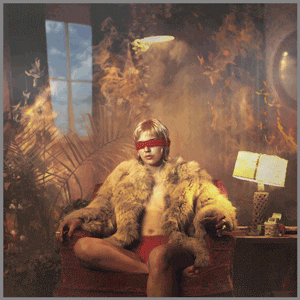 When asked about his favorite high-profile project, Bartlett referenced the album jacket he printed for American indie pop singer and songwriter Caroline Rose.
When asked about his favorite high-profile project, Bartlett referenced the album jacket he printed for American indie pop singer and songwriter Caroline Rose.
“She asked us to design her album jacket for her now No. 1-selling album, ‘The Art of Forgetting,’ which was nominated for a Grammy for Best Album Packaging. [It involved] over 80 hours of prepress, seven days of printing, and 14 days of hand assembly. [It was] a true labor of love,” he remarked.
According to Bartlett, what made the project stand out was the collaboration between the artist, the agency, and the printer.
He explained, “The concept started with the artist, who wanted to show that, on this album, she was going to be on fire. The agency, with input from us, designed the cover so that it could have both full motion and 3D in the same picture. This is highly unusual in that, most of the time, we either go with motion or 3D but not both together.”
“Once that was decided and input [was] given by us on the photo shoot, [we] took the pictures and turned them into a composite 3D with animation. [It] was extremely time-consuming, to say the least,” said Bartlett. “The agency was fabulous to work with, and the client did a great job of giving us comments, direction, and telling [us] what she was looking for. It was truly a team effort.”
Kraft Foods’ Mio magazine insert
Referencing the Benny Awards that OptiGraphics has won, Bartlett referred to the accolade as “the equivalent of an Oscar in the printing industry.” He reflected on one particular product that earned OptiGraphics a Benny — a magazine insert for Mio.
“One that stands out the most in my mind was the last Benny that we won. Kraft Foods, along with their agency from New York, Taxi, came to my office in Dallas […] and gave me a product brief concerning their introduction of Mio. They were looking for 14 million pieces, and these were going to be magazine inserts that were going to run in People, Entertainment Weekly, and Rolling Stone for four months. What they were looking for was an ad that would interact with water.”
Bartlett continued, “They gave me one week to figure this out. I had seen some things on the internet about a company in Japan that had developed a coating that would interact with water, and [after] flying over there and speaking with them, I figured out that they had no idea what they were doing. It did not work, but I did gain valuable information.”
“I came back, met with my team, and we developed a coating — that we now have patents on — that is made out of silica and could be mixed with a carrier and screen printed with multiple hits using multiple screen meshes. This coating is white, and when it interacts with water, it goes from white to clear, therefore revealing what’s been printed underneath. After about 15 minutes, it dries and goes back to its original state and can be repeated,” he explained.
“Then we had several other hurdles to overcome in that these magazines must be completely recyclable and can only be printed on real paper, not plastic paper. We worked with a paper mill to get a very hard sheet and then developed a special UV coating that is water resistant.
“I’m proud to say the 14 million pieces were delivered on time with not one piece failing or being late to the publications.”
Delta Airlines’ plane cards
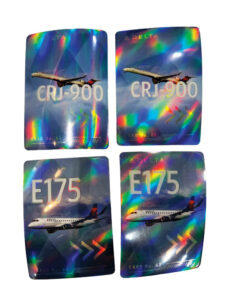 Bartlett cited Delta Airlines’ OptiChrome plane cards as the most challenging project he’s worked on to date.
Bartlett cited Delta Airlines’ OptiChrome plane cards as the most challenging project he’s worked on to date.
“[I was] called in to make a presentation on lenticular trading cards to replace the metal and plastic pilot wings that each of the plane’s pilots give out to young children who ride their plane,” he explained. “They wanted to stop giving them out because the kids would stick themselves with the pins.”
Bartlett recalled, “[I] started the presentation with lenticular cards, and the boss said, ‘Those are Cracker Jacks toys, and they’ll have no part of anything that Delta does. What do you [have] that’s super high-end and premium?’ Calmly, I reached into my presentation satchel, pulled out OptiChrome cards, and the rest is history — [they’re] one of our top five biggest accounts.”
Broadway’s ‘Death Becomes Her’ signage
Bartlett told us that OptiGraphics has had a proud tradition of being on Broadway and working with the biggest productions of the season.
“‘Death Becomes Her’ is a perfect example of that. We were chosen to provide both the outdoor and the indoor signage for the entire theater,” he remarked. “Because of the subject matter and the very message of the play, lenticular [printing] was absolutely the perfect solution for all the signage as well as direct-mail campaigns out to targeted consumers.”
That’s show biz
Working with high-profile clients and taking on these high-caliber projects isn’t for the faint of heart — and comes with its own set of rules, skills, and know-how.
“High-profile clients tend to demand your complete focus, are used to getting exactly what they want in the time frame they need it, will simply not take no for an answer, and are willing to spend whatever it takes to get exactly what they want and need,” explained Bartlett. “Figure out what they want and give them lots of it. And just like a doctor, you are on call 24/7. I routinely get and take calls at 4 a.m. and on weekends.”
In addition, it’s not uncommon for most high-profile clients to require nondisclosure or strict confidentiality agreements. For example, while working on projects for Taylor Swift’s Eras tour, Bartlett mentioned that the confidentiality was “even ramped up further, with no samples, etc. ever able to get out.”
Bartlett described working with high-profile clients as high risk, high reward. “It can be difficult because we all tend to stay in our comfort zone. And the comfort zone for most of us is usually smaller projects with lower-profile clients. Also, it can be extremely intimidating to talk with some of these high-profile clients and the demands that they require.”
He added, “You may go through four, six, eight, or even 12 months and not sell one of these clients, and it can become very discouraging.”
Barlett explained that working with these sorts of clients has “Taught us that you need to focus your time and energy on clients that can produce high-volume and high-profile projects that truly will make a difference in the marketplace. All clients are important, and we try to service as many as possible, but what we have found is that you can waste a lot of your time and energy on clients who produce very small programs and tend not to be on the cutting edge of their industries.”
However, the advantages of this tier of business and production can be highly rewarding. “The rewards are gigantic,” said Bartlett. “Yes, they can be very profitable and very rewarding, but also, there can be great satisfaction in providing something to a high-profile customer that is truly unique in the marketplace and something that they and their organization truly enjoy.”
For graphics shops interested in working with these types of clients, Bartlett advised service providers to break out of their comfort zone and “Find an industry that you can specialize in, have a good knowledge base, and find the leaders in that industry and show them what unique products and programs you can bring to their marketplaces.”
The power of three
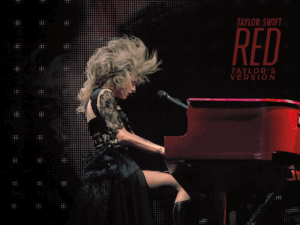 Bartlett’s most emphasized piece of advice for working with high-profile clients hinges on knowing three specific types of people: the gatekeeper, the coach, and the decision-maker.
Bartlett’s most emphasized piece of advice for working with high-profile clients hinges on knowing three specific types of people: the gatekeeper, the coach, and the decision-maker.
“When dealing with high-profile clients, you’re going to be put into a situation where you’re going to meet, talk, and interact with various different people within the organization, he explained. “It is imperative that when you first start a relationship with this client that you figure out what role each person plays so that you understand how and with what you need to provide that person as far as information.”
He continued, “Especially during the selling process, it’s important that you understand who is going to be the person that is going to put you in touch with all the people you need to interact with [the gatekeeper] and that you have them on your side so that they will not be a roadblock. You want to be the one that gets through immediately to the person you need to speak to.”
“Next, you need to find out who the coach is in your circle,” said Bartlett. “The coach is usually a person that has input into the final decision but rarely is the person that makes the ultimate decision. They’re usually a person who’s been with the company for an extended period of time, knows the ropes, knows the hot button, and most importantly, knows what the ultimate decision-maker wants and needs. They are invaluable in providing you with lots of information without boring other people and it’s imperative that you get them on your side.
He concluded, “The final person that we try to identify is a decision maker. This is the person who makes the ultimate decision about what is going to be done, what it is going to look like, what the cost will be, and the person who must be satisfied at the end of the project.”
Bartlett offered an example within the Taylor Swift organization to illustrate this trifecta, explaining, “Taylor’s personal assistant is the gatekeeper, and everything goes through [her]. Taylor’s mom, Andrea, is the coach who keeps everything on track, on time, and within budget. Taylor, of course, is the ultimate decision-maker.”
He continued, “Taylor and her mother, Andrea, are one of the most unique combinations that I’ve had to deal with. As you can imagine, they play ‘good cop, bad cop’ with me, and it works [perfectly] for them. Taylor, the good cop, is the creative one, giving me ideas, what she’s looking for, how [the product] needs to look, act, and perform, and most importantly, telling me what unique feature, benefit, and look she is after. She then turns it over to her mother, who plays the bad cop and [discusses] deadlines, price, and every detail including shipping, packaging, arrival points, etc.”
“After seven years, I have learned that you never, never say no. You simply figure out how to do it because they don’t care [about] the cost, they only care [about] the result,” Bartlett remarked. “I also know my place; I am a vendor and I could be replaced immediately at any time and any point if I don’t deliver or perform exactly the way I tell them I’m going to — my word is everything.”
Parting advice
Lastly, Barlett shared the following advice, “Most importantly, be genuine, be real, and never overpromise and underdeliver.”
He referenced a Blues song — recorded by artists such as Muddy Waters and B.B. King — with the lyrics, “In order to be convincing, you gotta be convinced,” and stated, “You need to be convinced that what you’re telling your customer is the absolute truth, that it is what you promised, and that what you are doing for them is the best in the industry.”
